Mobility, or the ability to move freely and easily, is a worthy fitness goal. It’s something most take for granted in their younger years, before factors such as joint stiffness and sarcopenia combine to make movement more difficult with age.
In many instances, this doesn’t have to be the case, according to researchers at the University of Bath. They successfully tested an exercise programme proven to “prevent physical decline”. The findings – including some of the exercises used – are capable of helping people of all ages move freely for longer.
“With the REACT study, which stands for retirement in action, we wanted to see whether physical activity for people aged 65 and above can make a difference to their mobility, and whether that mobility can be maintained long term,” says lead researcher Professor Afroditi Stathi.
In a large-scale randomised control trial, researchers delivered 64 group exercise sessions over the course of 12 months. Those who took the classes not only showed significantly greater mobility than those who didn’t by the end of the year, but they also maintained better physical function when tested again two years after the study’s conclusion.
In short: this type of exercise boasts both short and long-term positive effects. Stathi says the research also showed that those with lower mobility have “more chances to develop diseases and die sooner than people who are strong”.
“Another extremely powerful finding from this study was that, because of these changes, we observed lower medical prescriptions in the people who received the programme, and a lower number of unplanned hospital admissions,” she adds.
Below, those responsible for the study reveal why it works and share exercises you can do to maintain your mobility for many years to come.
What are the benefits of regular physical activity and mobility exercises?
During the study, participants were monitored based on their “short physical performance battery” – calculated using leg strength, gait speed and standing balance assessments.
“The composite score on this scale went up in a clinically meaningful way [for those who attended the classes],” says Dr Max Western, lead researcher from the University of Bath’s Department for Health. “This was predominantly driven by improvements in strength and balance.”
The greatest improvements were seen in lower limb function – researchers observed strength increases in what Stathi terms the “independence muscles”.
“As people get older, the ability to move around without problems, go up and down stairs or get up from chairs – this is not a luxury, it’s a necessity, and we saw people improve in these areas,” she explains.
“But for us, one of the best outcomes was that we targeted a wide range of abilities. We had people who, according to our research terms, were classified as ‘frail’ or ‘pre-frail’, and we found the programme was equally effective no matter how low their mobility was at the start.”
The takeaway message from this is a strong one: No matter your age or current fitness level, it is highly likely there are evidence-based programmes – like this one – that can improve your mobility and physical function.
Read more: Five stretches you should be doing every day according to a flexibility expert
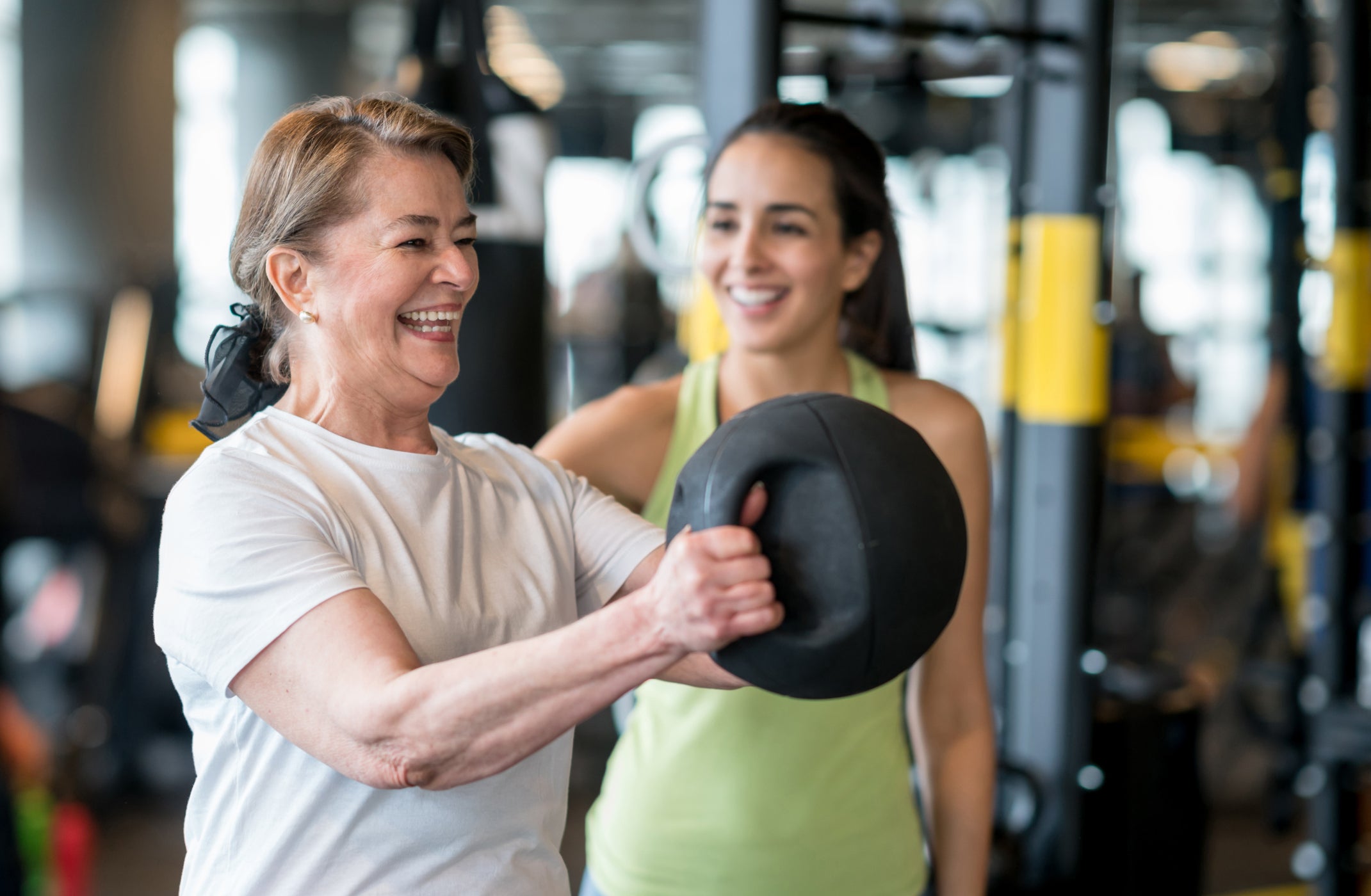
open image in gallery
Exercises targeting improvements in mobility can reduce morbidity and mortality, research suggests (Getty/iStock)
What did the sessions involve?
“A typical 60-minute session started with a warm-up, followed by strength training, aerobic training, some functional exercises and some fun, game-based activities,” Stathi explains. “These were chosen based on their impact on mobility.”
The underlying aim was developing strength and balance – “the forgotten guideline in physical activity recommendations, because it underpins everything and holds your physical capability together”, according to Western.
“Then, at the end of each session, we had a dedicated social time for people to chat and engage with each other,” adds Stathi.
This emphasis on social interaction, community and enjoyment remained a central pillar of the sessions throughout the study. Exercise is at its most effective when done consistently, and people are far more likely to attend a class they enjoy.
“We think that is one of the core reasons for the success of the programme, and the reason we had such a high percentage of session attendance,” Stathi says. “People came to the programme because they were worried about their health or mobility, but they stayed because they liked being in that group.”
Those leading the classes also made efforts to reframe exercise as something enjoyable, rather than a vehicle for weight loss or a means to an end, as it is so often sold.
“A lot of people might carry ideas about what physical activity is – ‘no pain, no gain’,” Stathi says. “We wanted to break that down because nobody will stick with something where they suffer for very long.”
Participants were educated to increase their confidence when exercising and help them find ways to make an active lifestyle more accessible. Aerobic exercise, such as walking, was encouraged outside of classes.
“Going from having someone tell you something is good for you to actually experiencing that it’s good for you – we want to help people travel that journey,” Western says.
Read more: The science-backed exercise method that can help fight the effects of ageing
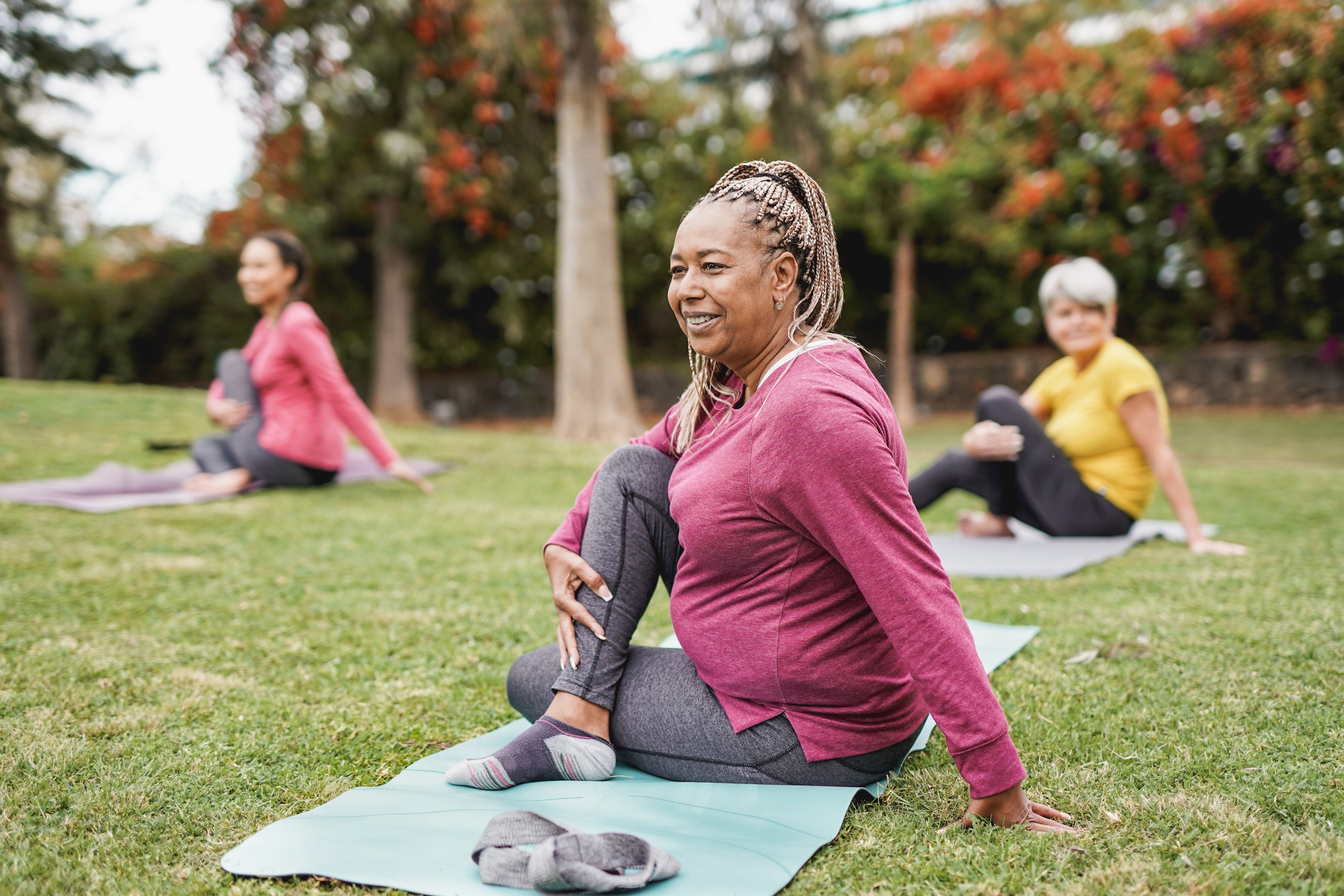
open image in gallery
Using exercise as a social activity can make it more enjoyable, leading to consistent participation (Getty Images/iStockphoto)
Mobility exercises from the study you can try for yourself
In our discussion, researchers were keen to stress the importance of social interaction in this study – if you can perform the exercises below in a group setting, somewhere other than your home, you will unlock bonus social and motivational benefits as well as physical perks.
They also highlighted the importance of mobility-boosting games such as bean bag petanque during their sessions. Here, throwing, bending and lunging are needed to toss and collect the bean bags, but these are wrapped up and disguised within a fun, social activity.
“The focus of REACT was to support people to leave home, because we have tonnes of evidence from other studies we’ve been involved in that getting out of the house ensures people can benefit in a holistic way from physical activity,” says Stathi.
However, the team did share five sample movements from the classes, which you can try to maintain or improve your mobility. For each one, perform it for a minute at a self-selected pace, rest for one minute, then move on to the next exercise.
“We suggest recording the number performed in the minute each time as this lets you track your progress,” researchers say. As a general recommendation, they suggest using this particular protocol twice per day as an “exercise snack”.
Sit-to-stand:

open image in gallery
Sit-to-stand exercise (University of Bath)Start in an upright seated position on a kitchen chair. Try to keep your arms folded across your chest to avoid using them as an aid, then stand up straight. Repeat.
Standing knee bends:
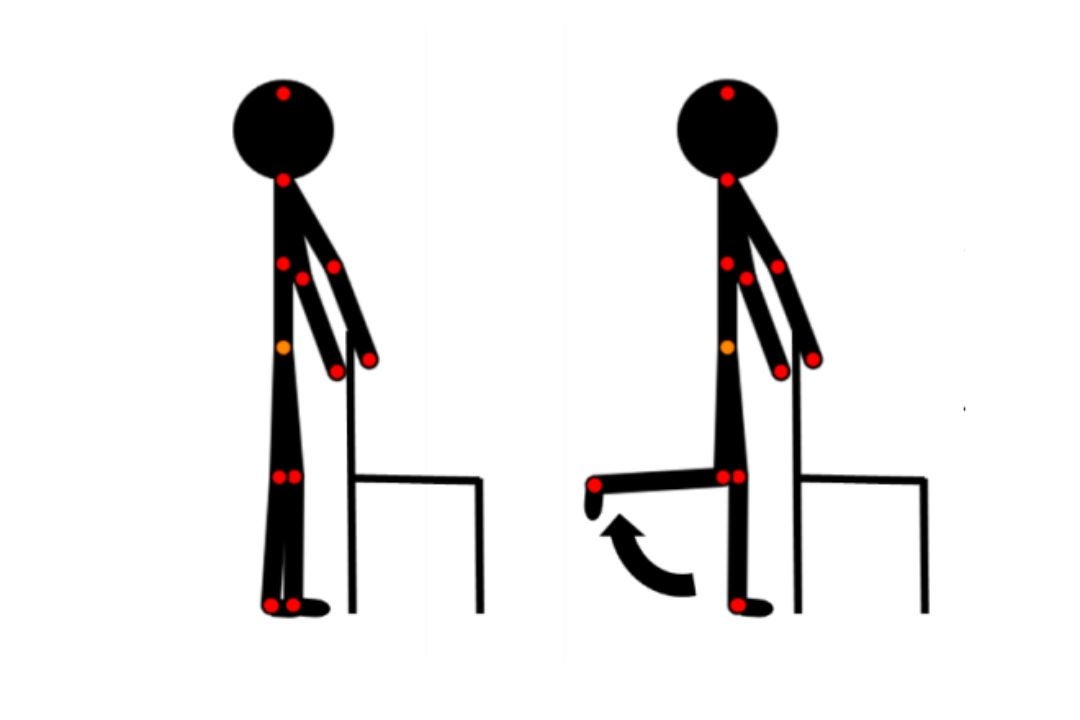
open image in gallery
Standing knee-bend exercise (University of Bath)Stand upright, holding onto something stable for balance if needed. Keeping your thighs vertical, raise your left foot off the floor until your left knee forms roughly a right angle. Control it back to the floor, then repeat with your right leg.
March on the spot:
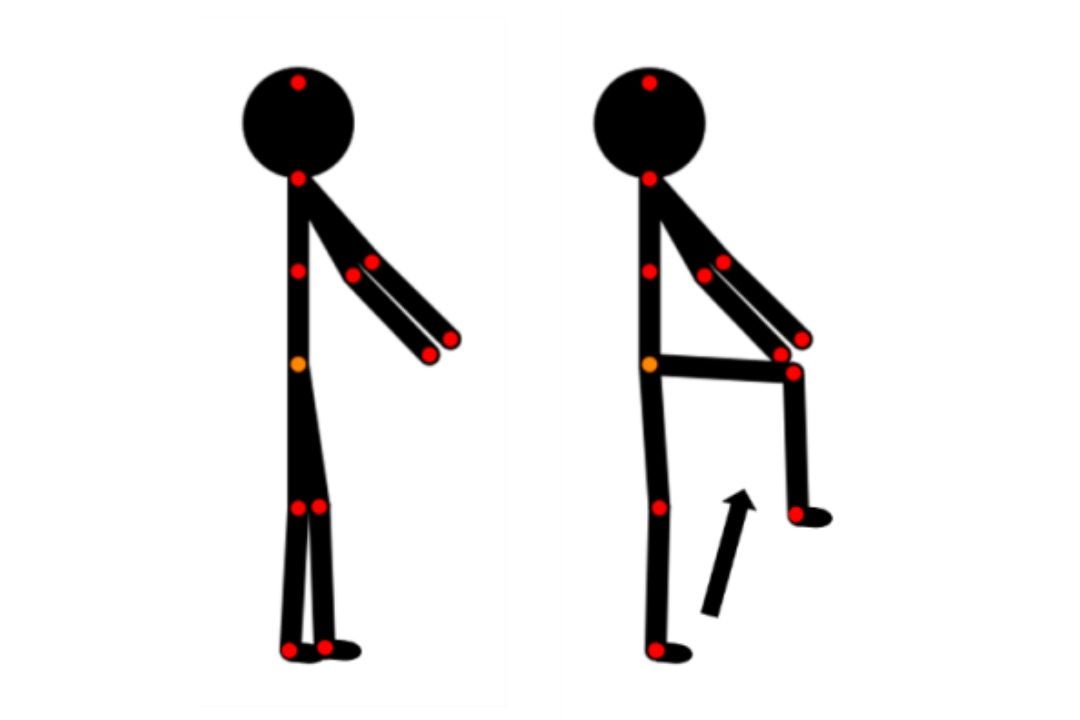
open image in gallery
Marching on the spot exercise (University of Bath)Standing upright. Raise your left knee in front of you, aiming to lift it high enough so that your thigh is parallel to the ground. Lower it to the floor, then repeat with your right knee. “If you struggle with balance, you can hold onto something stable like the back of a chair with one hand,” say researchers.
Seated leg kicks:
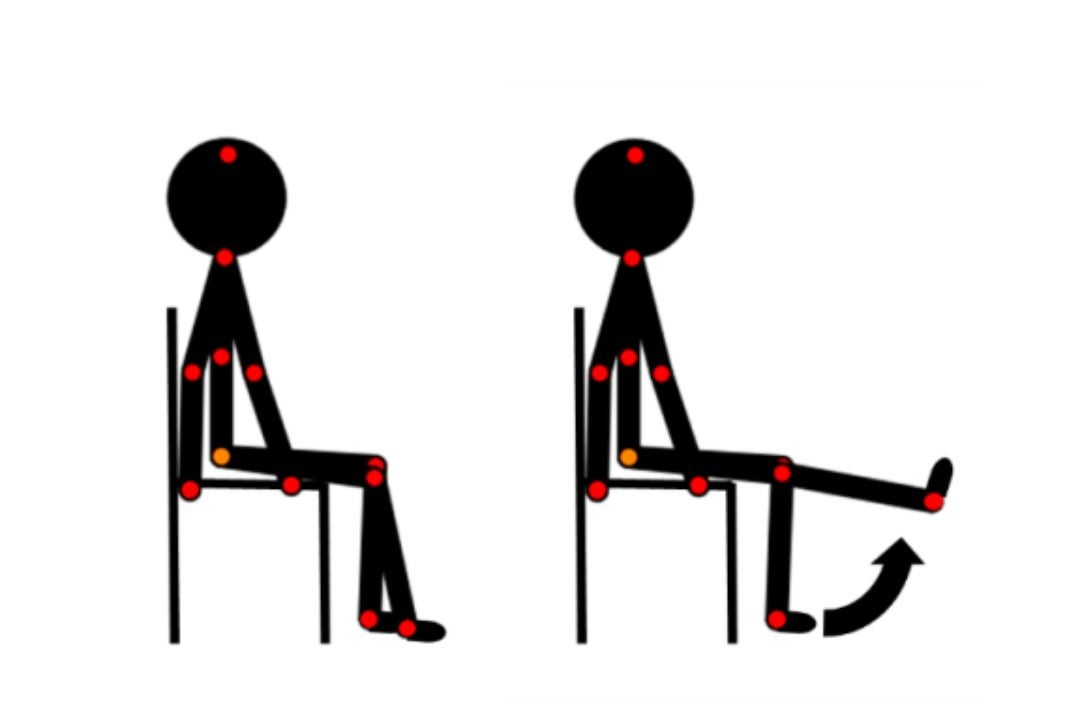
open image in gallery
Seated leg kick exercise (University of Bath)Sit upright on a chair. Raise your left leg in front of you by straightening your left knee at a controlled speed. Return that leg to the starting position, then repeat using the other leg. “If you have quite long legs, it may help to place a rolled-up towel under your thigh to raise your knee a little higher in the start position,” researchers advise.
Standing calf raises:
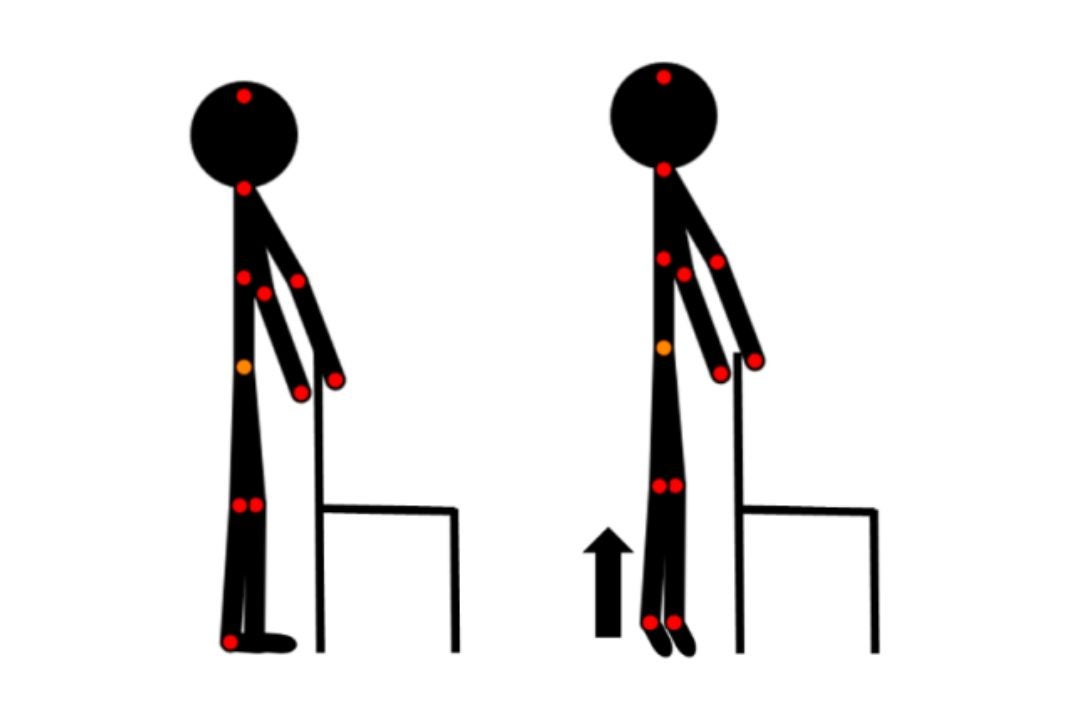
open image in gallery
Calf raise exercise (University of Bath)Stand upright with your feet flat on the floor. Rise onto your tiptoes as high as you can, then return to the start position. “It is advisable to hold onto something stable like a chair, table or door frame to maintain balance.”
Stathi recommends trying to break up long periods of sitting down, such as watching TV, to further improve mobility. You might also incorporate basic movements like stretches, sit-to-stands or calf raises into your day while doing regular activities such as waiting for a kettle to boil or cooking.
“The caveat there is that getting out of the house will still make most of the difference,” Stathi reaffirms.
Read more: Professor of physical activity reveals the small daily habit change to make for big health benefits
.jpg)
open image in gallery
Many effective strength-building exercise require little to no equipment. For the moves listed above, all you need is a kitchen chair (iStock)
What causes mobility limitations?
Mobility limitations can be caused suddenly by an accident, such as a fall. However, in most cases, the loss of mobility is a gradual process that occurs as we age.
“Usually, low physical activity throughout life leads to mobility limitations as people get older,” says Stathi. “The human body will cope up to a point and compensate [for the inactivity and subsequent lack of strength], but there comes a point where it cannot compensate any more – then people will feel the lack of mobility.”
This is why the study targeted people aged 65 and above – roughly one in three people in this age bracket have severe mobility limitations, according to researchers.
Read more: The important thing your exercise plan is probably missing – particularly if you’re older

open image in gallery
It is never too late to start exercising and experience the many benefits, researchers say (Getty/iStock)
Who can benefit from these exercises?
You’re probably already aware that an active lifestyle provides plenty of health benefits, whatever your age.
The exercises above, and the wider REACT programme, were designed for people aged 65 and above with mobility limitations. For some people, the exercises will be easy, and for others, they will represent a significant challenge.
If you are in the former group, the difficulty simply needs to be adjusted to suit the individual. For example, if you can easily do a sit-to-stand, you might further challenge your stability by performing a bodyweight squat or single-leg sit-to-stand. Alternatively, you could hold a kettlebell at your chest to increase the resistance faced by your thigh muscles as you stand up.
By adapting exercises to provide an appropriately challenging stimulus, anyone can benefit – and the perks are impressive.
“Being active and being mobile has a protective effect against mobility limitations,” Stathi says. “It’s never too late to start, and equally important is that it’s very safe. We ran this massive trial and we didn’t have any serious adverse events.
“We had people in their nineties in the REACT study and they improved their mobility. It was really impressive to see people who started the programme holding two walking sticks, then finished it without a walking stick.”
“Our results show that it’s not too late to start, as long as you catch it before it’s gone completely,” adds Western. “At the start, we had people in the study who might take up to a minute to walk four metres or do five sit-to-stands out of a chair. We really saw profound benefits in those people.”
Read more: If you struggle to stay fit, try adding these nine simple science-backed behaviours into your week
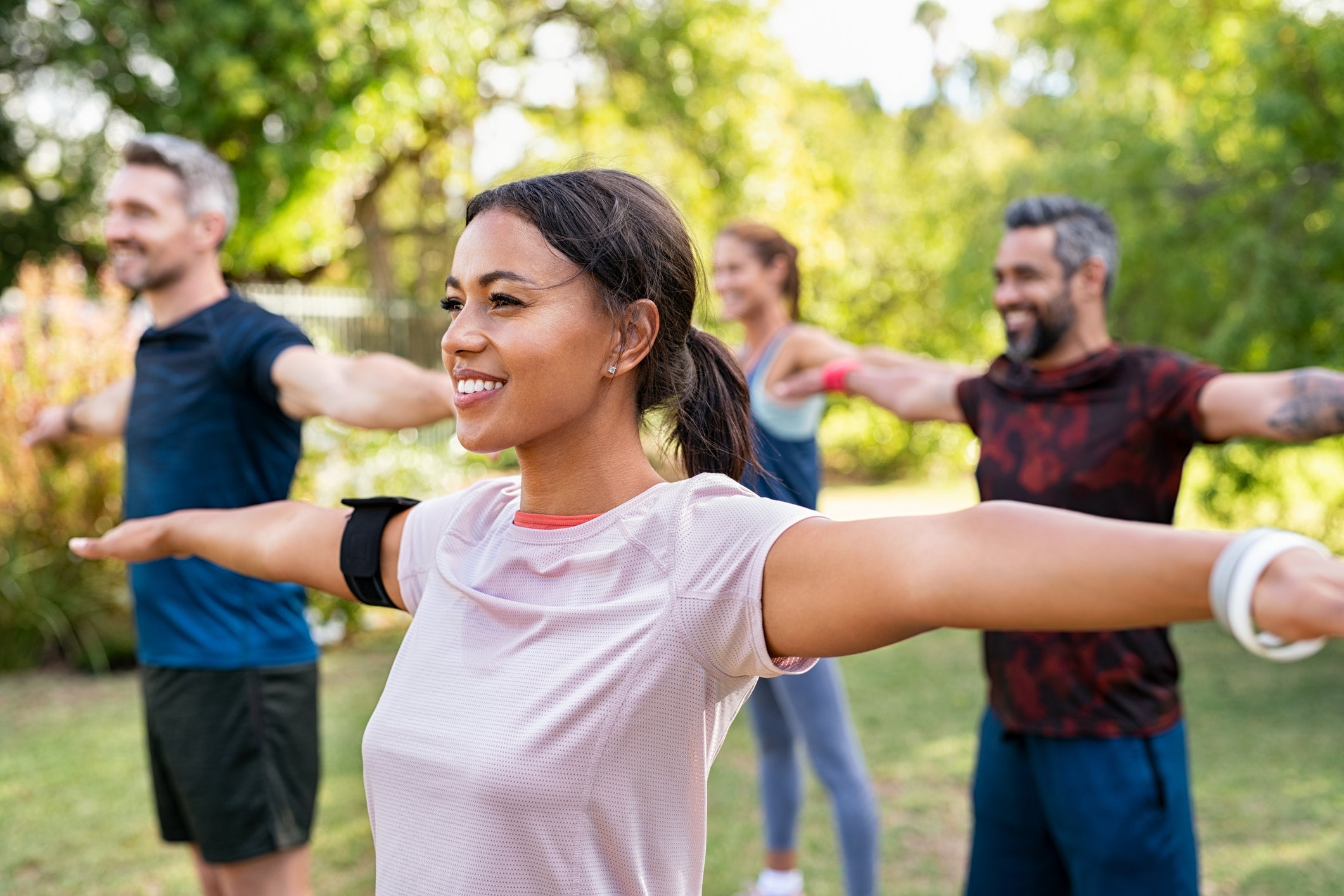
open image in gallery
‘We have strong evidence of the power of physical activity to translate not just to individual benefits, but also societal benefits’ (Getty Images/iStockphoto)
However, the key in the eyes of the researchers is that you need “the whole system” to see results of this magnitude – not just isolated classes, advice or exercises.
“You need a good exercise programme with very good, trained instructors to support you, and you need a supportive environment as well,” says Stathi. “Everybody is more likely to become more active when [the activity is] social and meaningful.
“For us, we wanted [to focus on mobility] because it’s something people can do to live a longer, healthier life that is more meaningful to them.
“We have strong evidence of the power of physical activity to translate not just to individual benefits, but also societal benefits and benefits for our NHS budget.”
The REACT study was delivered in Bristol, Bath, Exeter and Birmingham. Its success and popularity led to a continuation of the classes in several areas after the conclusion of the study. A three-year grant has now been secured to conduct an implementation study in Bristol, North Somerset, South Gloucestershire and North Central London, starting from February 2026.
“Look out for a session, coming near you soon,” Western says.

